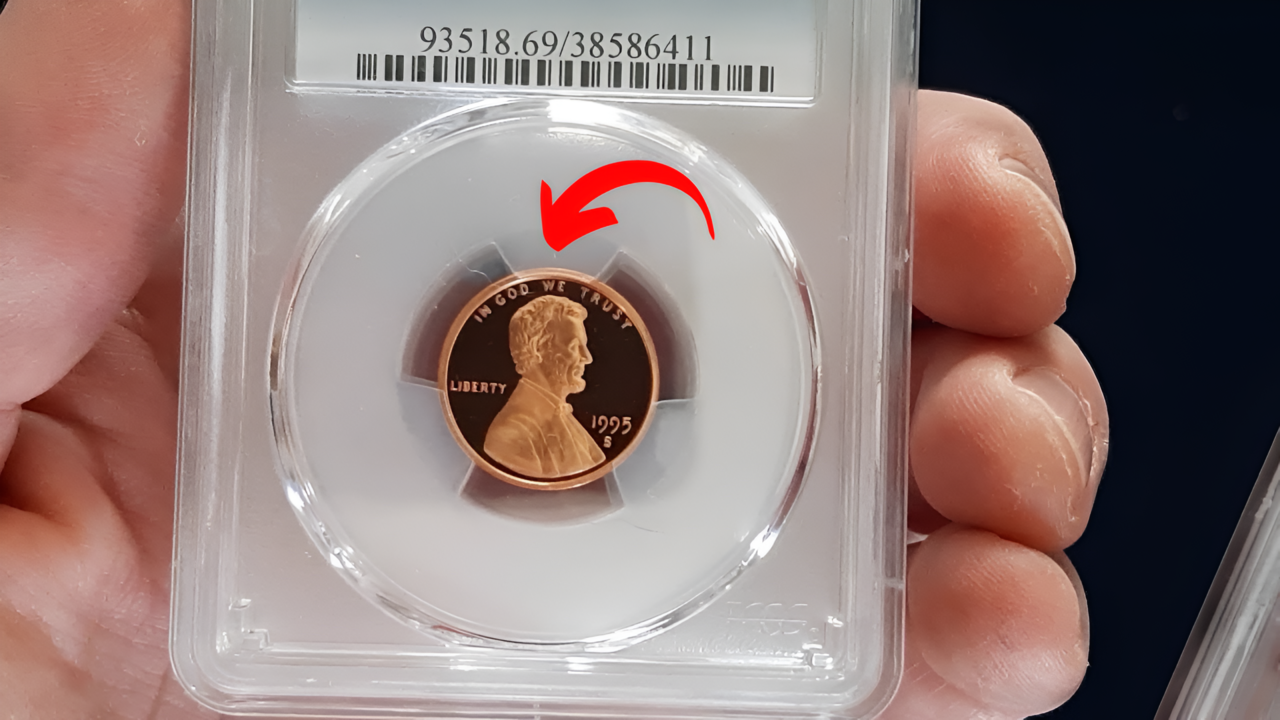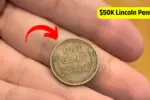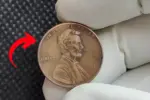The world of coin collecting is filled with hidden treasures. Every penny in your pocket has the potential to hold incredible historical or monetary value if you know where to look. Among these remarkable finds is the legendary Lincoln Wheat Penny, a seemingly ordinary coin with an extraordinary story. One particular variant of this penny has been valued at an astonishing $425 million, making it a record-breaking collectible.
What is the history of the Lincoln Wheat Penny? How did one of these coins achieve such an unbelievable valuation? And, most importantly, could one still be hiding in circulation today? Let’s dive into the fascinating world of numismatics (the study of coins) and uncover the truth about this rare and valuable coin.
The Origin of the Lincoln Wheat Penny
The Lincoln Wheat Penny, officially known as the Lincoln Cent, was first minted in 1909 by the United States Mint to honor the 100th anniversary of President Abraham Lincoln’s birth. It marked the first time a U.S. coin featured the portrait of a real individual Abraham Lincoln himself.
Key Features of the Lincoln Wheat Penny
- Obverse (front): A profile of Abraham Lincoln, designed by sculptor Victor David Brenner, based on a photograph of Lincoln by Matthew Brady.
- Reverse (back): Two stalks of wheat encase the words “ONE CENT,” emphasizing the nation’s agricultural roots, with the inscription “E Pluribus Unum” above.
This design was minted from 1909 to 1958, after which it was replaced by the Lincoln Memorial design. Over the years, billions of these pennies were minted, but certain years and mint marks have made some versions exceptionally rare.
The Legend of the $425 Million Lincoln Wheat Penny
While most Lincoln Wheat Pennies are worth only their face value of one cent, a select few have become legendary among collectors. One penny, in particular, is rumored to be worth $425 million, making it the holy grail of coin collecting.
What Makes This Coin So Valuable?
- Minting Error: The coin may feature a rare minting error or anomaly, such as a double die strike, off-center stamping, or an incorrect metal composition.
- Scarcity: Coins with very low mintage numbers or experimental designs are exceptionally rare. Fewer coins mean higher value.
- Historical Significance: This specific penny may have been part of a test run or struck under unusual circumstances, making it unique.
- Condition: The penny in question is said to have an incredibly high grade, preserved in near-perfect condition (often referred to as “mint state”). Graded coins in such pristine condition fetch astronomically high prices at auctions.
Although rumors of the $425 million valuation persist, details remain speculative, as this coin has not been publicly confirmed or auctioned. However, the tale continues to inspire treasure hunters and collectors alike to search for their own Lincoln Wheat Penny treasures.
Rare Lincoln Wheat Pennies to Watch For
If you’re intrigued by the possibility of stumbling upon a valuable penny, here are some rare Lincoln Wheat Pennies worth looking for:
1909-S VDB
- Mint: San Francisco.
- Distinction: The initials “VDB” (for Victor David Brenner) appear on the reverse. Only 484,000 were minted, making it highly collectible.
- Value: Can range from $700 to over $2,000, depending on condition.
1943 Copper Penny
- Mint: Various.
- Distinction: During World War II, pennies were minted from steel to conserve copper for the war effort. However, a few copper planchets were mistakenly used.
- Value: These coins can sell for $100,000 to over $1 million at auction.
1955 Double Die
- Mint: Philadelphia.
- Distinction: Features a noticeable doubling of the date and inscriptions, making it one of the most famous error coins.
- Value: Often fetches $1,000 to $10,000, depending on condition.
1922 No D Penny
- Mint: Denver.
- Distinction: Lacks the “D” mint mark, likely due to a worn die.
- Value: Can sell for thousands of dollars.
Why Is the Lincoln Wheat Penny Still in Circulation?
Despite its age and historical significance, the Lincoln Wheat Penny remains in general circulation. While most have been pulled out by collectors, some are still unknowingly exchanged as regular currency.
Reasons These Coins Persist in Circulation
- Unawareness: Many people fail to recognize these older pennies or their potential value.
- Abundance: Billions of Lincoln Wheat Pennies were minted, making them less noticeable among regular change.
- Lost Collectibles: Rare coins may have been accidentally spent by previous owners, returning them to circulation.
This means that every handful of change or coin jar you encounter could potentially hold a valuable piece of history.
How to Identify a Rare Lincoln Wheat Penny
If you’re curious about the pennies in your possession, here are steps to identify rare and valuable ones:
1. Check the Date
Examine the coin for key years such as 1909, 1922, 1943, or 1955. These years correspond to some of the rarest variations.
2. Look for Mint Marks
Mint marks (e.g., “S” for San Francisco, “D” for Denver) are found below the year on the obverse. Specific mint marks can significantly affect a coin’s value.
3. Inspect for Errors
Use a magnifying glass to check for signs of double die errors, off-center strikes, or other anomalies that could increase the coin’s value.
4. Evaluate Condition
Coins in “mint state” (with little to no wear) are worth far more than heavily circulated ones. Grading services like PCGS (Professional Coin Grading Service) or NGC (Numismatic Guaranty Corporation) can professionally assess your coin.
The Thrill of Coin Collecting
The story of the $425 million Lincoln Wheat Penny has inspired countless individuals to explore numismatics. Coin collecting is not just a lucrative hobby it’s a journey through history.
Why People Collect Coins
- Historical Connection: Coins capture significant moments and eras in history.
- Investment Potential: Rare coins often appreciate in value, making them an excellent investment.
- Treasure Hunting: The thrill of finding a rare coin in everyday transactions is unmatched.
Where to Start
- Examine Loose Change: Check the coins you receive as change or find in jars at home.
- Visit Banks: Purchase rolls of pennies to search through for hidden gems.
- Attend Coin Shows: Explore collections and network with other collectors.
Conclusion
The Lincoln Wheat Penny is more than just currency it’s a piece of American history and a potential fortune waiting to be discovered. While the legend of the $425 million penny remains unverified, it underscores the excitement and allure of numismatics. Every coin has a story, and with the right knowledge and tools, anyone can embark on the thrilling quest for rare pennies.
So, the next time you handle a penny, take a closer look. You might just be holding a small but incredibly valuable piece of history.
F&Q
What is the Lincoln Wheat Penny?
A U.S. one-cent coin minted from 1909 to 1958 featuring Abraham Lincoln and wheat stalks on the reverse.
Is the $425 million Lincoln Penny real?
It’s more legend than confirmed fact, but it symbolizes how rare coins can become incredibly valuable.
What years should I look for?
Watch for 1909-S VDB, 1943 copper, 1955 double die, and 1922 no D.
How do I check if my penny is rare?
Look at the date, mint mark, condition, and any unusual features or errors.
Can rare pennies still be in circulation?
Yes—many go unnoticed in pocket change, so keep an eye out.



